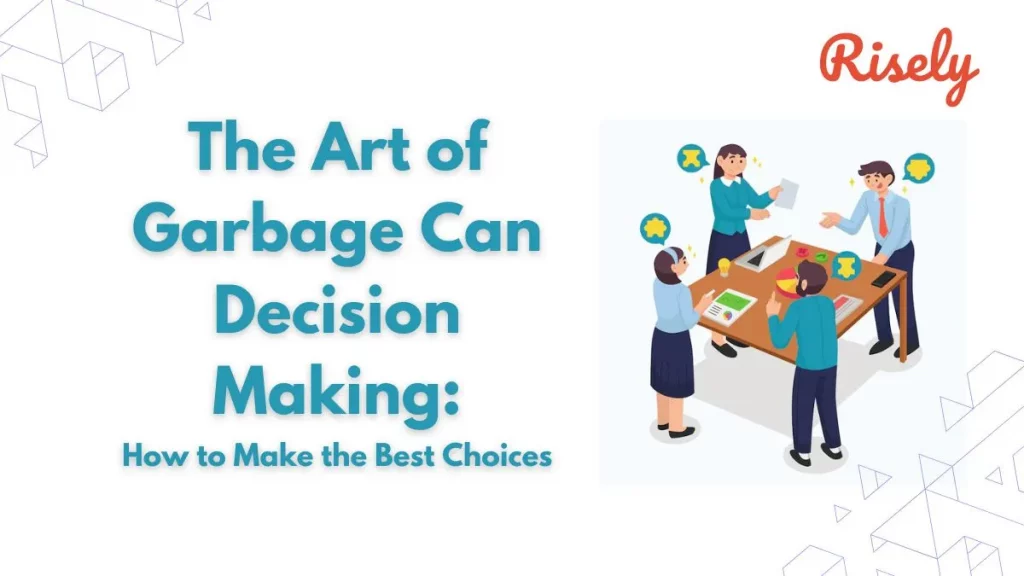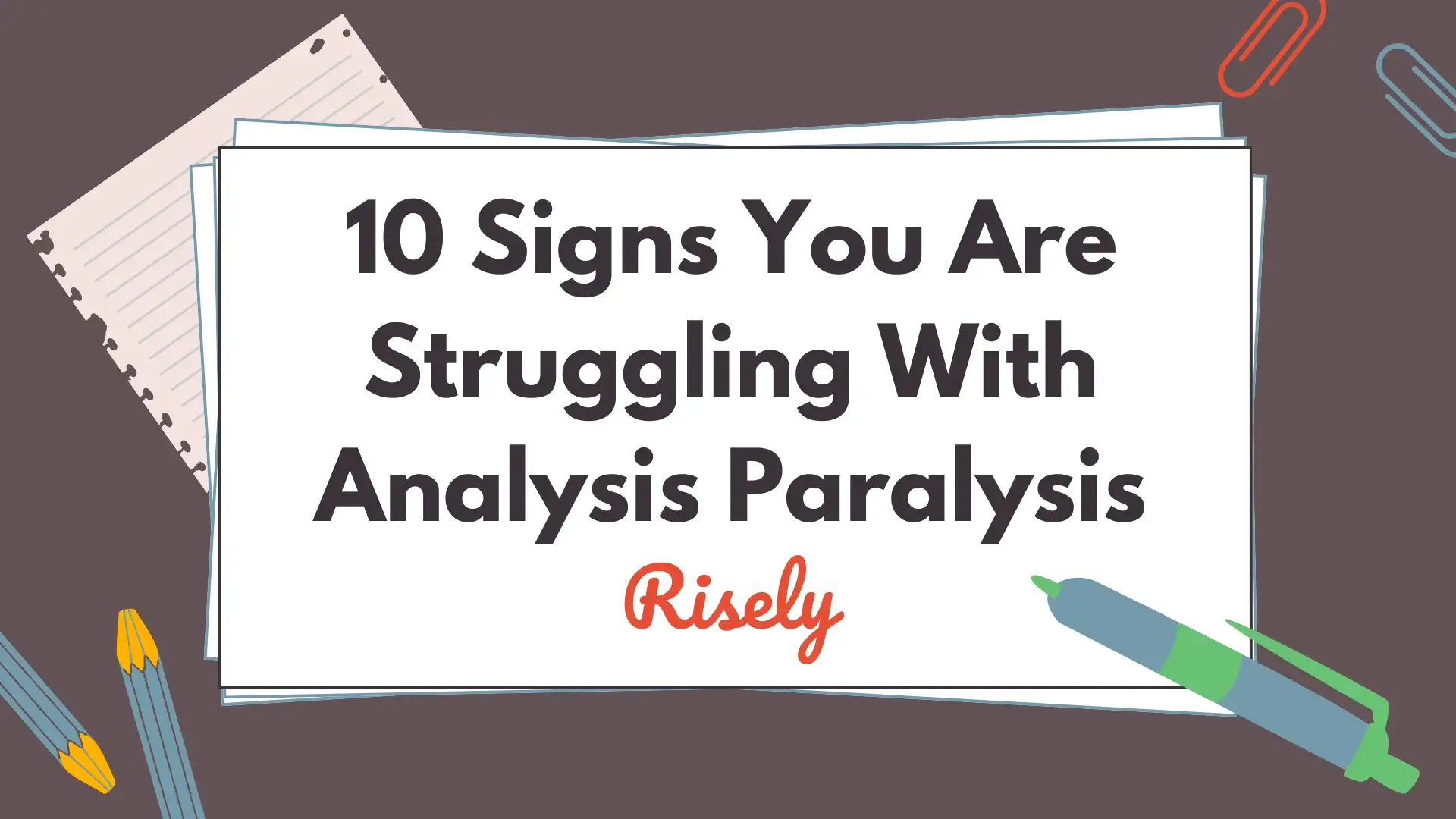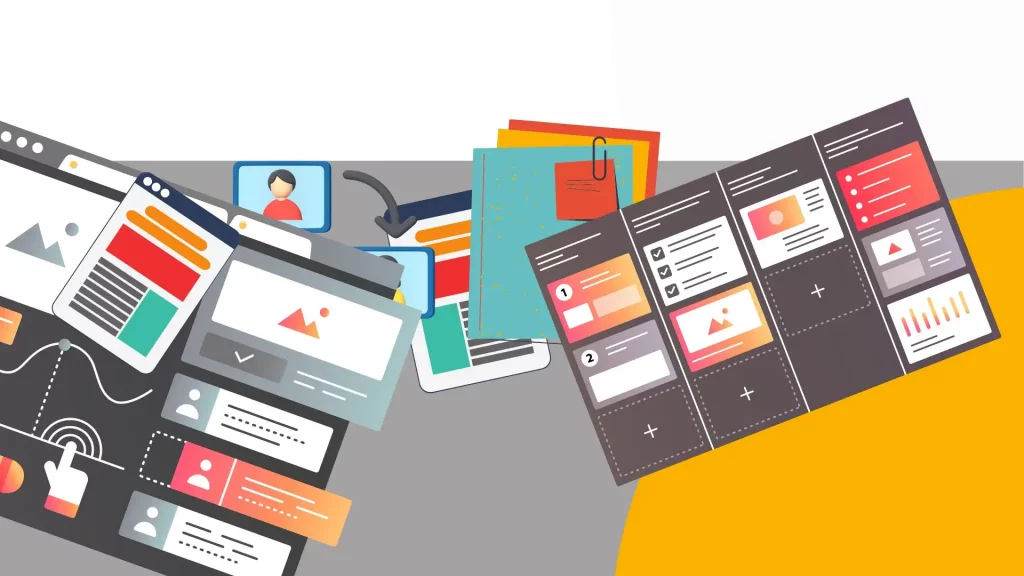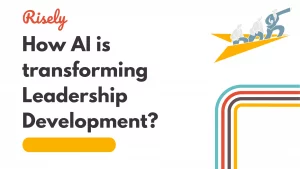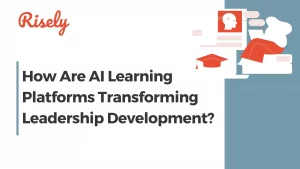The Art of Garbage Can Decision Making: How to Make the Best Choices
Do you ever feel like your mind is in a constant state of decision-making paralysis? There’s always something else you should be doing, but never getting around to it? If so, imagine the decision-making pressure that other people in your life must feel as well. If you’re constantly indecisive, you’re not alone. Whether we admit it or not, decision-making is an essential part of daily life and often an obstacle to our goals. When it comes to decision-making, the choice is rarely simple. In critical situations such as career advancement, choosing the right option can have a profound impact on our success and happiness. So, if making decisions stresses you out, maybe garbage can decision making will help you relieve some of that anxiety. In this blog post, we’ll examine the benefits of garbage can decision making and how to apply it in your everyday life. We’ll cover how garbage can decision making works and some examples of its application. While we might still be unsure about whether or not garbage can decision making is for you, at the very least we hope this blog has given you a better understanding of the technique and why other people might find it helpful too.What is Garbage Can Decision Making?
Garbage can decision making is a decision-making model that suggests decisions are made in an unstructured and haphazard way, where problems, solutions, decision makers, and opportunities come together randomly, like items thrown into a garbage can. In this model, decision-making is seen as a process in which problems and solutions are matched as they arise, with decision makers randomly selecting from the available options. The model proposes that decision-making occurs when four independent streams come together: problems, solutions, participants, and choice opportunities. While the garbage can decision making model may seem chaotic, it can be useful in certain situations, such as in highly uncertain or rapidly changing environments. However, it is not suitable for all situations and can lead to suboptimal outcomes. Therefore, it is important to weigh the benefits and risks of using the garbage can decision-making model before applying it to a specific decision-making process.Advantages of Garbage Can Decision Making
The garbage can decision making model is an unorthodox approach to decision-making, but it has its advantages, including:- Flexibility: The garbage can decision-making model is well suited to complex and changing environments because it allows decision-makers to quickly adapt to new information and circumstances.
- Creativity: This model allows for unconventional solutions to problems, and decision-makers can select solutions that they may not have considered in a more traditional decision-making model.
- Participation: The model encourages participation from multiple individuals and groups, which can lead to better decision-making outcomes by incorporating different perspectives.
- Quick decision-making: This model allows for rapid decision-making when time is of the essence, as the decision is made when the streams converge.
- Reduced pressure: The model removes the pressure of making decisions based on a set schedule, allowing decision-makers to make choices when they are ready.
- Experimental approach: This model encourages experimentation, testing, and learning by allowing decision-makers to try different solutions and seeing what works and what doesn’t work.
Model for Garbage Can Decision Making
The garbage can decision-making model, developed by Cohen, March, and Olsen in 1972, is a model of decision-making that suggests decisions are made in an unstructured, haphazard, and often chaotic manner. It is based on the premise that decisions are made by matching problems with solutions as they arise, rather than through a rational or logical decision-making process. The garbage can decision-making model proposes that decision-making occurs when four independent streams converge: problems, solutions, participants, and choice opportunities. These streams can operate independently and unpredictably, with decision makers randomly selecting from the available options.- The “problems” stream consists of issues or problems that arise and need solutions.
- The “solutions” stream includes the various alternatives that are available for solving problems.
- The “participants” stream consists of the individuals involved in the decision-making process.
- The “choice opportunities” stream represents the various chances or opportunities to make decisions.
Other Interesting Reads
Examples of Garbage Can Decision Making
Garbage can decision-making can be applied in different work environments and situations. It is important to note that while garbage can decision making can be useful in certain situations, it is not suitable for all scenarios and can lead to suboptimal outcomes. Therefore, it is essential to weigh the benefits and risks of using the garbage can decision-making model before applying it to a specific decision-making process. Here are some examples of how the garbage can decision-making model can be used in the workplace:- Project Management: In project management, the garbage can decision-making model can be applied when managing project risks. In this situation, the problems, solutions, participants, and opportunities streams may come together in a way that requires immediate action. Team members can identify potential solutions to address the risk, and the team can then quickly select and implement the best solution.
- Start-up companies: Start-up companies can use the garbage can decision-making model to develop their business models. In this scenario, the streams come together in an unstructured way, with limited resources available. The team can identify potential solutions to the problems and evaluate them based on their impact, feasibility, and cost, and then make quick decisions.
- Emergency Management: Garbage can decision-making can be applied during emergencies or crises, such as natural disasters or terrorist attacks. In this situation, problems, solutions, participants, and opportunities streams come together rapidly and in an unstructured manner. The team can quickly identify potential solutions and implement them as quickly as possible to mitigate the damage and protect individuals.
- Academic research: In academic research, the garbage can decision making model can be applied when selecting research topics or designing experiments. The streams may come together in a way that requires the team to make a quick decision based on the available resources, data, and opportunities.
Conclusion
Garbage decision-making focuses on the process of making decisions and identifying options, then analyzing the potential risks and benefits of each decision and ranking them with a hierarchy of decision-making styles. Through garbage can decision-making, organizations can better process and manage decision-making situations to achieve optimal outcomes. Next time, try the garbage can decision making when you feel stuck in chaos.Aastha, a passionate industrial psychologist, writer, and counselor, brings her unique expertise to Risely. With specialized knowledge in industrial psychology, Aastha offers a fresh perspective on personal and professional development. Her broad experience as an industrial psychologist enables her to accurately understand and solve problems for managers and leaders with an empathetic approach.
Do your decisions resemble art? Or chaos rules?
Find out now with the free decision-making self-assessment for managers
Other Related Blogs
10 Signs You’re Struggling with Analysis Paralysis at Work
10 Signs You’re Struggling with Analysis Paralysis at Work The smart fox declares, “I have a hundred ways to escape when trouble approaches. You have only one.” As the dogs…
Evidence Based Decision Making: 4 Proven Hacks For Managers
Evidence Based Decision Making: 4 Proven Hacks For Managers In this blog, we will explore the concept of evidence-based decision-making and provide seven proven hacks for managers to implement evidence-based…
6 Best Books On Decision Making For Managers
6 Best Books On Decision Making For Managers Effective decision-making is crucial for managers to navigate the complexities of their roles. You are responsible for making important choices that can…
Best Decision Coaches To Guide You Toward Great Choices
Best Decision Coaches To Guide You Toward Great Choices Effective decision-making is more crucial than ever in today’s rapidly evolving business landscape. Entrepreneurs, leaders, and professionals alike are constantly faced…

